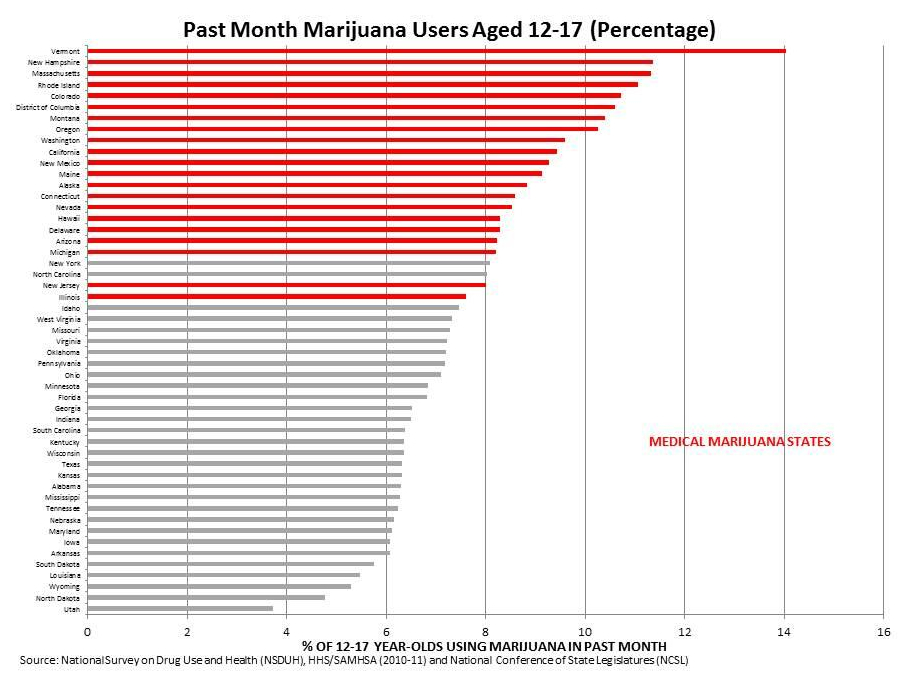Tonight O’Reilly featured the investigative reporting of Tina Griego of the Washington Post. The story was about the flourishing black market for marijuana in Colorado. Monte Stiles
Inside Colorado’s flourishing, segregated black market for pot
DENVER — In these, the curious, infant days of the state’s legalization of recreational marijuana, of shiny dispensaries and touch-screen ordering and suburban parties where joints are passed like appetizers over granite countertops, no one would notice the duplex. Plain brick, patchy grass behind chain link, it appears weary, resigned to what the tenant calls “the ‘hood” and others might call left-behind Denver, untouched by the frenzy of investment that has returned to downtown.
The front door of the duplex stays closed. Sheer white curtains cover the living room window. A basement filtering system vents air scrubbed of the sweet funky smell of the pot growing in the basement. The tenant keeps his grow operation here small. It’s his home. That’s his grandson upstairs watching TV with strict instructions not to open the door if someone knocks. Should the cops inquire, they’d find a frail-looking, middle-age Latino with diabetes and heart problems, talking about his pension and his Medicaid and waving his medical marijuana registry card.
The red card — part of the state’s legal landscape since 2000 when voters approved the sale of marijuana for medical use — allows the grower to cultivate a doctor-prescribed 16 plants. It does not allow him to do what he typically does next: sell what he does not consume to the underground market. It does not allow him a second grow op in another rented house where he and a partner grew 55 plants until the landlord grew suspicious.
It does not allow him, in other words, to run his own little corner of a black market that still exists in the state with America’s most permissive legal pot sales.
The grower says he recently sold more than 20 pounds of his weed — Blue Dream for the mellow, Green Crack for the perk — to middlemen who flipped it for almost double the price.
“I try to keep it legal,” he says, “but sometimes it’s illegal.”
Camouflaged amid the legal medicinal and recreational marijuana market, the ever-adaptable underground market thrives. Some in law enforcement and on the street say it may be as strong as it’s ever been, so great is the unmet local and visitor demand.
That the black market bustles in the emerging days of legalization is not unexpected. By some reckonings, it will continue as long as residents of other states look to Colorado — and now Washington state — as the nation’s giant cannabis cookie jar. And, they add, as long as its legal retail competition keeps prices high and is taxed by state and local government at rates surpassing 30 percent.
“I don’t know who is buying for recreational use at dispensaries unless it’s white, middle-class people and out-of-towners,” Rudy Reddog Balles, a longtime community activist and mediator. “Everyone I know still has the guy on the street that they hook up with.”
This black market boom, the state argues, is a temporary situation. As more legal recreational dispensaries and growers enter the market, the market will do what it does with greater competition: adjust. Prices will fall. The illegal market will shrink accordingly.
In any case, these first curious months of the legal recreational market have laid bare a socioeconomic fault line. Resentment bubbles in the neighborhoods where marijuana has always been easy to get.
The resentment goes something like: We Latinos and African Americans from the ‘hood were stigmatized for marijuana use, disdained and disproportionately prosecuted in the war on drugs. We grew up in the culture of marijuana, with grandmothers who made oil from the plants and rubbed it on arthritic hands. We sold it as medicine. We sold it for profit and pleasure.
Now pot is legalized and who benefits? Rich people with their money to invest and their clean criminal records and 800 credit scores. And here we are again: on the outskirts of opportunity. A legion of entrepreneurs with big plans and rewired basements chafes with every monthly state tax revenue report.
Ask someone who buys and sells in the underground market how it has responded to legalization and the question is likely to be tossed back with defiance. “You mean, ‘Who’s been shut out of the legal market?’ ” asks Miguel Lopez, chief community organizer of the state’s 420 Rally, which calls for legalization of marijuana nationally.
“It’s kind of like we made all the sacrifices and they packed it up and are making all the money,” says Cisco Gallardo, a well-known gang outreach worker who once sold drugs as a gang member. For the record, he does not partake. It rattles him a little, he says, to see the young people with whom he works shed their NFL and rapper dreams for the next big thing: their own marijuana dispensary.
In this light, taxation is seen as a blunt instrument of exclusion, driving precisely the groups most prosecuted in the war on drug further into the arms of the black market where they remain at risk for arrest or robbery. In one Denver dispensary, a $30 purchase of one-eighth of the Trinity strain of cannabis includes $7.38 in state and local taxes – a near 33 percent rate. As Larisa Bolivar, one of the city’s most well-known proponents of decriminalizing marijuana nationally and opening a true free market, puts it: That seven bucks buys someone lunch.
“It’s simple,” she says. “A high tax rate drives black market growth. It’s an incentive for risky behavior.”
There may be an argument there, says Lt. James Henning, who heads the Denver Police Department’s vice/drug bureau, but one, don’t expect much sympathy and two, “you have to follow the law. If you want to sell marijuana, find a way to sell it legally.”
Until then, there’s Junior.
He’s visiting the duplex basement, standing amid the Cool-Bloom, the Rapid Grow, the bags of Coco, sharing an e-cig loaded with a hash oil cartridge with the grower. Both men insist on anonymity, for fear of being targeted by law enforcement.
“Dude, it’s way too hot in here,” Junior says, examining a yellowing plant. “It should be, like, 80.” The digital thermometer on the wall reads 97 degrees. The portable AC broke, the grower says.
Junior, round-cheeked, soft-spoken, a once-upon-a-time gang member, recently lost his job in the oil industry, so he’s returned to an old pastime. “Would I prefer he had his legitimate job, still?” his wife says. “Yes, but when he did he was never home and now he is.”
You have pot to sell, Junior will find you a buyer. You want to buy? He’ll find you product. He prefers to deal in bulk, taking a small commission, usually $100 a pound. Every once in a while, when he’s got extra bills to pay, he sells it himself. That’s much riskier, felony risky, kids-visiting-dad-at-the-jailhouse risky. But profit tempts from all directions. Two thousand dollars a pound in Colorado is $3,200 in Oklahoma or Kansas City and $5,500 in New York City.
A July 9 study of Colorado’s marijuana market and demand for the Colorado Department of Revenue estimates the total adult demand, including out-of-state visitors, at about 130 metric tons in 2014. Of that, licensed retailers are expected to supply 77 metric tons, most of it from medical marijuana outlets. That leaves what the report calls a “sales gap” of about 53 metric tons of projected unmet demand — not including use by minors. Enter the licensed home growers, the people buying legally and reselling illegally, the illegal grow and distribution networks: the underground.
Marijuana production in the state “is like a shoe factory,” Balles says. “You’ve got the ones that go to Nike and the ones that go out the back door to the flea market. One way or another, it all gets sold.”
Seven months of legality is too early to tell anything, and what is now may not be in another seven months.
What exists now, however, is profit.
The grower says he cleared $30,000 on his last big deal. “That’s the kind of math I want to be doing,” Junior says. He has plans to start his own grow op in his stepdad’s house. He dreams of opening his own dispensary and is now interviewing for a job at one.
“A lot of people they look at me,” the grower says, “and they go: ‘Damn, must be nice baller, driving that new car, driving that motorcycle, taking your boat out on Sunday.’ I say I worked hard for it. ‘Oh, yeah, we know, you’re working hard, watering plants.’ I call them my money trees.”
“They say money don’t grow on trees,” Junior says. “They’re lying.”
The grower laughs. “They say, ‘What’s that smell?’ I say, ‘Money.’”
Tina Griego is a reporter for Storyline. Previously, Tina was a city columnist for the Rocky Mountain News and the Denver Post for a combined 12 years.























